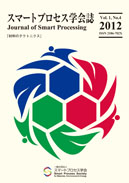Due to considering about SDGs in the world, the recent well-known revolution is a changing from conventional mobility to “E-mobility”. In the environment, the motivation of develop lasers process is very high and key because of non-contact, selective and less heat affected zone for the manufacturing of car itself and the related components. Example, one of new application for contribution of the reduction of CO
2 is laser drying of Battery slurry. BMBF in Germany has started project about this application and aiming to improve manufacturing efficiency to save energy. This laser drying application is not completely new idea, but it is
result of the change of viewpoint. The laser source for this application is direct diode laser which has high WPE, and homogeneous top hat beam, so, it contributes for Carbon neutral society. Another important laser application is welding process of copper material and dissimilar metal material like a aluminum with copper for motor, inverter, secondary battery. For conventional IR laser systems with keyhole welding is not possible to have smooth surface and high-quality welding due to the low absorption and the high heat conductivity of copper. Due to this, new CW blue laser that is wavelength of 450 nm enables a reproducible of pure copper material with a precise energy deposition. In direct comparison between the IR and the blue, the IR depicts instable welding conditions resulting in a missing weld or highly varying welding depth. With the application of the wavelength of 450 nm, a melting of copper material in the heat conduction mode is possible for the first time, allowing the precise adjustment of the melt pool geometry. Processing these materials with near infrared wavelength is possible but requires a high average power and has further disadvantages as soon as the copper melts. Absorption and heat conductivity change substantially when melting copper making the process
instable. To overcome this problem green wavelength had been initially investigated, the results had been better than IR lasers, but still the complex optical set-up required for the frequency conversion to generate green laser light poses challenges. On the other hand, there is another solution for these material welding is about IR+blue Hybrid laser solutions. Also, Laserline has introduced 3 kW blue laser in the market in April 2022, so, this power range can expand applications for EV development.
抄録全体を表示
